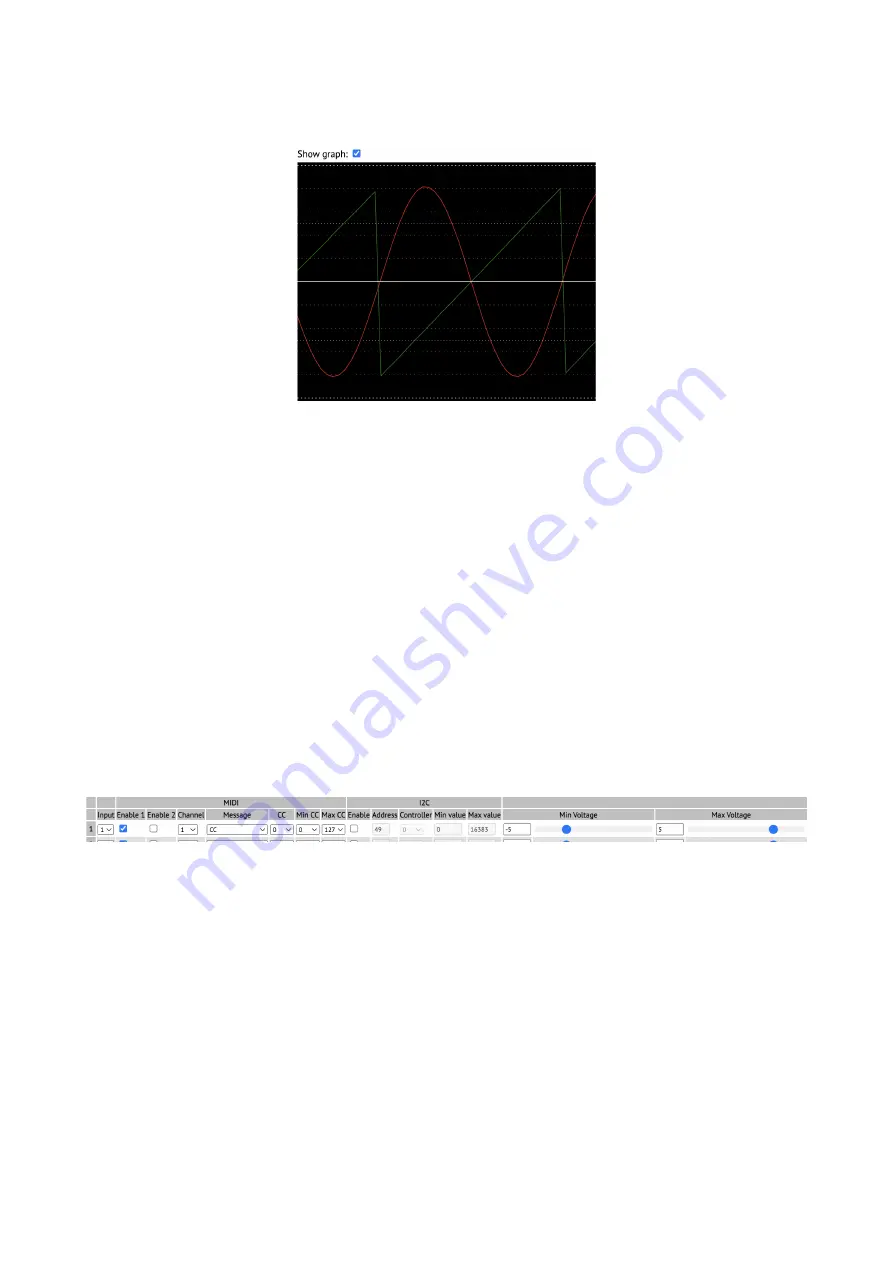
Graph View
The 'Show graph' checkbox enables a graph view of the module's inputs.
Each input is shown in a different colour – red, green, blue, cyan, magenta, yellow, orange, and
white for inputs 1 to 8 respectively.
Configuration Wizard
The 'Configuration Wizard' lets you quickly set up the entire module using common configuration
choices – for example, all inputs generating MIDI CCs, or all inputs used as CV/gate pairs to
generate MIDI notes.
It should be fairly self-explanatory once you understand the configuration options below.
There is one 'wizard' per line. Choose your settings and click the 'GO' button.
Continuous Generators
Here is where you set up the generation of 'continuous' message streams, where typically a new
message is generated whenever the input voltage changes. Often these will be MIDI CCs or I2C
controllers, though other options are available.
There are sixteen generators available. In the default and wizard-generated configurations the first
eight generators are used, in one-to-one correspondence with the eight inputs, but this relationship is
not fixed. If you wanted, you could generate 16 different CCs from one input.
Each row in the generator table is divided into four sections – input, MIDI, I2C, and voltages.
The input section has one control, a drop-down menu to select the module input that is used.
The MIDI section begins with 'Enable 1' and 'Enable 2', to enable the generation of messages on
MIDI ports 1 and 2 respectively. Next come menus for the MIDI channel (1-16) and message. The
message options are CC, Program Change, Channel Pressure (aka aftertouch), Poly Pressure (aka
polyphonic aftertouch), and Pitch Bend. For CC and Poly Pressure messages, the CC menu allows
you to choose the CC number or note number for the messages. The 'Min CC' and 'Max CC' menus
allow you to set the minimum and maximum controller values that will be sent, corresponding to
the minimum and maximum voltages. (These are not used for Pitch Bend messages, which always
Page 9



































